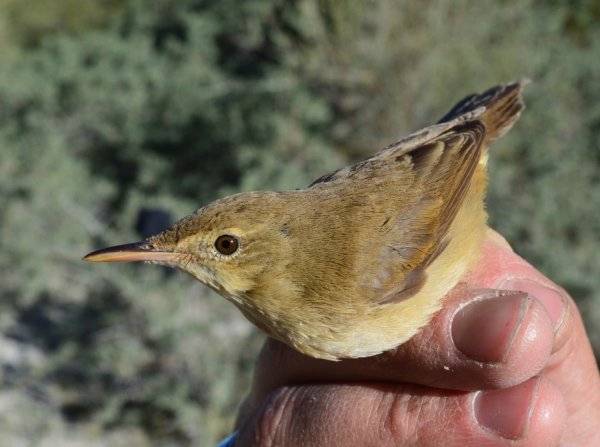AFGHANISTAN Large-billed Reed Warblers discovered breeding

The breeding site of one of the world’s least known birds, Large-billed Reed Warbler Acrocephalus orinus, has been discovered in the remote and rugged Wakhan Corridor of the Pamir mountains of northeastern Afghanistan. The first specimen of the species had been discovered in India in 1867, with more than a century elapsing before the second discovery of a single bird in Thailand in 2006 first reported by BirdLife International. In 2008, Rob Timmins from WCS was conducting a survey of bird communities along the Wakhan and Pamir rivers when he immediately heard a distinctive song coming from a small, olive-brown bird with a long bill. Timmins taped the bird’s song. He later heard and observed more birds of the same species. Initially, Timmins assumed these birds to be Blyth’s Reed Warblers Acrocephalus dumetorum, but a visit to the Natural History Museum at Tring in the UK to examine bird skins suggested his birds were another species. In summer 2009, WCS researchers returned to the site of Timmins’ first survey, this time with mist nets used to catch birds for examination. The research team broadcast the recording of the song, a technique used to bring curious birds of the same species into view for observation and examination. The recording brought in Large-billed Reed Warblers from all directions, allowing the team to catch almost 20 of them for examination and to collect feathers for DNA analysis. Later laboratory work comparing museum specimens with measurements, field images, and DNA confirmed the exciting finding: the first-known breeding population of Large-billed Reed Warblers.“Almost nothing was known about this species and it was consequently listed as Data deficient by BirdLife on the IUCN Red List, so the discovery of a breeding population marks a major step forward”, said Dr Stuart Butchart, BirdLife’s Global Research and Indicators Coordinator. “This is great news from a little-known species from a remote part of the world and suggests that there may be more discoveries to be made here”, said Mike Evans, BirdLife’s compiler of the Important Bird Areas of the Middle East. (Source: Birdlife International)
